Research Experience
Founded in 1999 in France, PREDICT’s technology is based on many years of research. PREDICT has published several papers on PHM in journals such as PHM Society, IEEE PHM, IFAC, MFPT and COMADEM. Previously, PREDICT was a sponsor of PHM International and PHM Europe conferences on several occasions with PREDICT’s Founder & Managing Director, Dr. Jean-Baptiste Leger, also the Director of the PHM Society Europe. Dr. Leger continues to engage with such groups as the SAE IVHM (Integrated Vehicle Health Management) working group.
Léger JB., Neunreuther E., Iung B., Morel G. (1999) Integration of the Predictive Maintenance in Manufacturing System. In: Advances in Manufacturing. Advanced Manufacturing. Springer, London.
Link to the article
Nowadays maintenance is considered as a key point for the manufacturing system competitiveness because first its cost represents the major part of the operational cost, and second, a system failure can have an important impact on product quality, equipment availability, environment, and operator.
(2001) Integration of maintenance in the enterprise: Towards an enterprise modelling-based framework compliant with proactive maintenance strategy, Production Planning & Control, 12:2, 176-187.
Link to the article
The aim of this paper is to propose an enterprise modelling-based formal framework Architectures for Enterprise Integration, as a common model of understanding between all the actors involved in a proactive maintenance strategy implementation. This enterprise modelling-based formal framework extends GERAM and CIMOSA modelling frameworks to integrate, from the shop-floor level to the business one, the three basic processes of prognosis, diagnosis and monitoring which make up a proactive maintenance system. This extension is mainly based, first, on the systemic paradigm taking into account some other principles (e.g. modularity or mapping mechanism); and second, on the federation of scientific and normative works related to maintenance processes. This formal framework has been applied within the European ESPRIT IV REMAFEX project to two hydropower plants for maintenance system modelling. The results of these methodological and applied researches from PhD thesis (Leger 1999, Methodological contribution to the proactive maintenance of the industrial production systems: proposition of a formal modelling framework. PhD thesis of the Nancy University Henri Poincaré, France) have been the roots to start up the innovative PREDICT company for consulting, training and software development in proactive maintenance area.
Simeu-Abazi, Zineb & Iung, Benoît & Léger, Jean-Baptiste & Ly, Fatime. (2000). Maintenance in the Manufacturing Systems. IFAC Proceedings Volumes. 33.
Link to the article
Maintenance can be defined as the combination of all technical and associated administrative actions, including supervision actions, intended to keep an item or system in, or restore it to, a state in which it can perform its required function. For production equipment, ensuring the system function should be a prime maintenance target. Maintenance should try to provide the right CRAMP pararneters (Cost, Reliability, Availability, Maintainability, and Productivity) for any automated manufacturing system. This paper gives an overview of different methods of maintenance applied to the manufacturing systems and the decision support systems used in the industry.
Peysson F., Mozzati C., Leon D., Lafuste Q., Leger JB. (2019) Fleet-Wide Proactive Maintenance of Machine Tools. In: Armendia M., Ghassempouri M., Ozturk E., Peysson F. (eds) Twin-Control. Springer, Cham.
Link to the article
Fleet-wide proactive maintenance characterizes all services that are made available to the users to help them to operate, supervise and maintain a fleet of systems. These services can be, for a general manager of a fleet, a dashboard of all the systems’ business indicators or, for a technical manager, a dashboard of all the systems’ maintenance and health status. At the bottom level of the pyramidal hierarchy, a technical operator should have a fast overview of the systems’ status and should be alerted at the right time when a system needs to be checked. Nowadays, more and more data and information are available on machine tools which should be treated and analysed to extract the right information for the right people at the right time. To achieve this goal, a fleet-wide proactive maintenance platform requires several main business services to have an understandable view of the system by all users and, thus, save time for decision-making during diagnosis and prognosis analysis.
F. Peysson, M. Ouladsine, R. Outbib, J. Leger, O. Myx and C. Allemand, “A Generic Prognostic Methodology Using Damage Trajectory Models,” in IEEE Transactions on Reliability, vol. 58, no. 2, pp. 277-285, June 2009.
Link to the article
In modern industries, there is intense pressure to continuously reduce costly, unscheduled maintenance of complex systems. To obtain high availability with reduced life cycle total ownership costs, classical maintenance policies are not optimal. Indeed, these polices do not allow us to perform maintenance only when it is necessary because they are not able to forecast system damage states in the future. To predict precisely the future system damage state, it is necessary to take into account how and where the system will be used. To build incremental damage models, this paper presents a generic methodology and formalism based on the system decomposition in three levels: environment, mission, and process. Predictions are performed via a sequence of known mission parameters, and environmental conditions. This allows for mission and maintenance planning by taking into account the predicted system damages over time.

